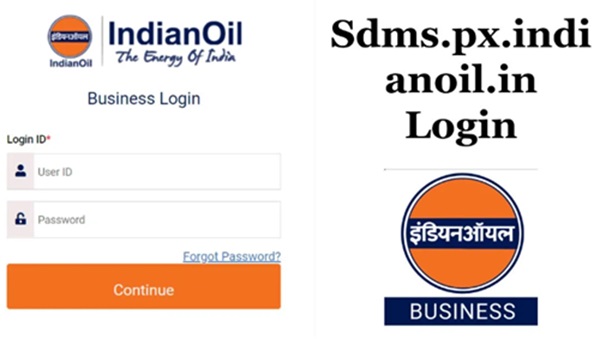Introduction to TheJavaSea.me
In recent months, one of the most alarming incidents in the cybersecurity space has been the TheJavaSea.me AIO-TLP370 leak. This breach exposed sensitive files, developer notes, configuration keys, and even personal user data—raising red flags across industries.
Why does this matter? Because leaks like this are not isolated events—they demonstrate how fragile modern supply chains and digital infrastructures can be. From businesses and governments to individual internet users, the scale, controversy, and global impact of this leak are undeniable.
In this guide, we will break down everything you need to know: what AIO-TLP370 is, what was leaked, who is affected, the risks, and most importantly—how you can protect yourself and your organization.
👉 Related: TheJavaSea.me Leaks AIO-TLP: Full Breakdown and Risks
What Is AIO-TLP370?
AIO-TLP370 stands for All-In-One Threat Log Processor version 370, a specialized tool used by developers, IT teams, and enterprises.
- Purpose of the tool: It was designed to unify log data, automate anomaly detection, and strengthen monitoring against cyber threats.
- Enterprise use: Many companies adopted it to simplify incident detection and response, especially for large-scale infrastructures.
- Recognition before the leak: Within the developer and cybersecurity community, AIO-TLP370 was considered a promising solution due to its automation and compliance-focused features.
👉 Explore More: New Software Name Mozillod5-2f5 – Features & Overview
What Is TheJavaSea.me?
TheJavaSea.me is a controversial platform/domain often associated with leak hosting and breach-related content. While some saw it as a resource for threat intelligence, others flagged it as a hub where sensitive or stolen data could circulate.
Its connection to AIO-TLP370 became clear when leaked bundles were first spotted there, making it a focal point of investigation.
Timeline of the Leak
The AIO-TLP370 leak unfolded in stages:
- Initial detection: Cyber researchers noticed files circulating on paste sites, private forums, and archives.
- Discovery: Security monitoring tools flagged suspicious traffic, leading to the identification of exfiltrated data.
- Exploitation: Threat actors quickly downloaded and shared the material, amplifying the damage before mitigations were in place.
Contents of the Leak (Detailed Breakdown)
The breach exposed a wide variety of sensitive materials:
- Source Code – proprietary algorithms and logic that could be reverse-engineered.
- Configuration Files – including API keys, cloud service details, and integration data.
- Credentials – hardcoded usernames, tokens, and passwords.
- Internal Documentation – developer notes, performance benchmarks, and test files.
- Access Logs – containing IP addresses, login activity, and metadata.
- Playbooks/Operational Frameworks – detailed incident response procedures.
- User Data – including emails, geolocation records, and in some cases, financial/payment information.
👉 Related Reading: Model Number XUCVIHKDS – Detailed Guide
Key Features of AIO-TLP370 (Pre-Leak)
Before the breach, AIO-TLP370 was valued for its features:
- Centralized log management.
- Real-time anomaly detection.
- Alert integration with Slack, SMS, PagerDuty, and other tools.
- GDPR-compliant data obfuscation.
- Planned upgrades: machine learning-based anomaly detection and container-native deployment.
How Was the Leak Discovered?
The leak was uncovered through a combination of:
- Cyber intelligence monitoring tools tracking data movements.
- Early warning signs like API key exposures and unusual login attempts.
- Whistleblowers and researchers who flagged suspicious files being shared in underground forums.
Who Might Be Affected?
The ripple effects of this breach reach across different groups:
- Businesses/Enterprises – at risk of breaches, financial loss, and espionage.
- Governments – national security concerns due to leaked operational details.
- Individuals – phishing attempts, identity theft, or misuse of personal data.
- Developers/SaaS providers – risk of code misuse, API exploitation, or cloning.
- Communities (gaming, open-source, modding) – potential exposure of user accounts or activity logs.
Risks & Implications of the Leak
The risks are both immediate and long-term:
- Exploitable system vulnerabilities.
- Credential misuse leading to account takeovers.
- Corporate espionage and stolen trade secrets.
- Cascading cross-industry impacts.
- Regulatory non-compliance risks under GDPR, HIPAA, or ISO frameworks.
👉 Also Read: Winobit3.4 Software Error – Causes, Fixes, and Prevention
Potential Causes & Culprits
While the exact source remains debated, experts have pointed to:
- Disgruntled insiders with access privileges.
- Supply chain compromise targeting third-party tools.
- Exploited vulnerabilities such as zero-day attacks or SQL injection flaws.
Speculation is ongoing, but what is clear is that poor dependency management and weak insider controls made this leak possible.
How Should Businesses Respond?
For organizations, a quick and structured response is critical:
- Audit systems for suspicious activity.
- Rotate/revoke all API keys and credentials.
- Apply patches and security updates without delay.
- Adopt zero-trust security frameworks.
- Regularly test and refine incident response plans.
👉 Check Out: New Software Name 8tshare6a – Complete Overview
Protective Measures for Individuals
If you are an individual concerned about exposure:
- Change all important passwords immediately.
- Enable 2FA/MFA wherever possible.
- Check your email in breach databases like HaveIBeenPwned.
- Monitor your bank and financial accounts for unusual activity.
- Stay cautious of phishing attempts posing as official updates.
Supply Chain Security Lessons
The AIO-TLP370 leak reinforces a hard truth: your security is only as strong as your weakest dependency.
- Audit third-party vendors regularly.
- Establish continuous monitoring and intelligence sharing.
- Collaborate with vendors for early breach detection.
- Integrate zero-trust security principles into all systems.
Cybersecurity Community Response
The global security community quickly mobilized:
- White-hat researchers reported vulnerabilities and shared fixes.
- Platforms attempted to take down leaked data where possible.
- Security advisories were issued across industries.
- Antivirus vendors updated detection rules to block malicious code based on the leaks.
Legal & Ethical Considerations
This incident raises complex questions:
- Privacy violations affecting both organizations and individuals.
- Intellectual property theft from leaked source code.
- Legal liability for those sharing or using leaked material.
- Ethical responsibility: handling leaked data without worsening harm.
Long-Term Cybersecurity Lessons
Some lessons are clear:
- Treat data protection as a top priority.
- Implement continuous monitoring across systems.
- Conduct regular audits and employee training.
- Strengthen compliance and encryption standards.
- Always prepare for breaches with a strong incident response strategy.
Is TheJavaSea.me Still Online?
As of recent checks, TheJavaSea.me is partially accessible, though certain ISPs and regions block it. Visiting the site poses major risks:
- Malware injection via browser exploits.
- Download of infected or booby-trapped files.
- Possible legal consequences in regions where the site is blacklisted.
👉 You Might Like: When is 547x-lp83fill Going to Be Live?
Future of Data Privacy After AIO-TLP370
The fallout from this leak is likely to influence the future of cybersecurity:
- Push for stricter international regulations.
- Wider adoption of AI-driven threat detection.
- Use of blockchain for transparency in supply chains.
- Mainstream adoption of zero-trust security.
- Greater individual responsibility for digital hygiene.
Conclusion
The TheJavaSea.me AIO-TLP370 leak is more than just a breach—it is a warning. It shows how vulnerable our interconnected systems really are.
Businesses, governments, and individuals must take proactive measures—not just reacting to incidents but building resilience into their digital infrastructures.
Cybersecurity is not just about protecting data; it is about protecting trust in the digital ecosystem.
👉 Browse More Tech Guides on TechNewzTop
FAQs About TheJavaSea.me AIO-TLP370 Leak
It is a controversial platform known for hosting and sharing leaked or breach-related content.
It stands for All-In-One Threat Log Processor version 370, a cybersecurity tool for log management and monitoring.
The leak included source code, credentials, internal documents, access logs, playbooks, and even user data.
The exact source is unclear, but experts suspect either insider involvement, supply chain compromise, or vulnerability exploitation.
Through cyber intelligence monitoring, unusual login patterns, and whistleblower alerts.
Use breach-checking tools like HaveIBeenPwned, and monitor your accounts for unusual activity.
Audit systems, rotate credentials, patch vulnerabilities, and adopt zero-trust security frameworks.
No. The site poses high risks of malware, exploits, and potential legal exposure.




